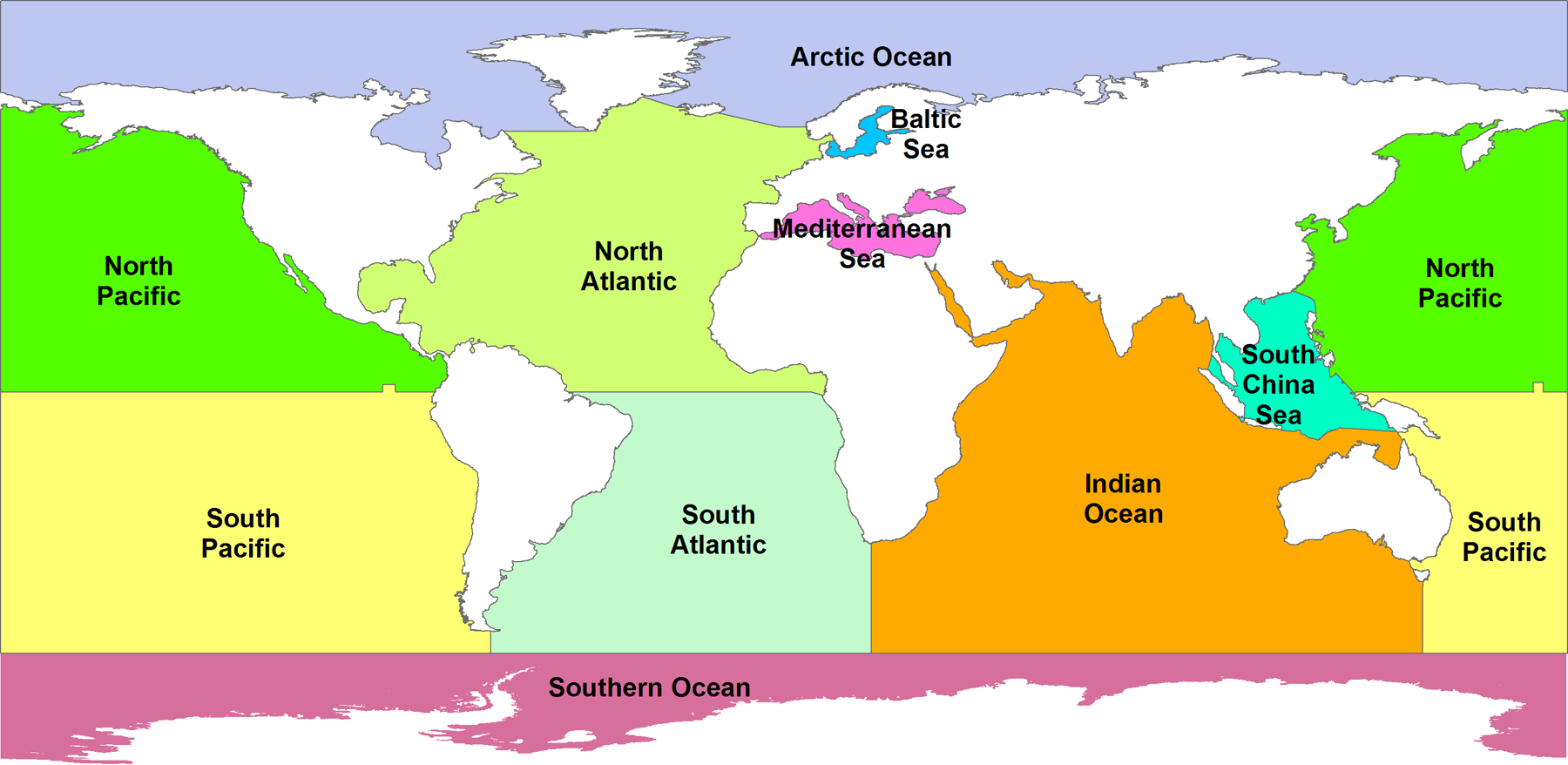THE EARTH’s SURFACE
TASK 1: Calculate the amount of fresh & salt water, and percentage of the Earth’s surface covered by water and land
THE WORLD’S OCEANS & SEAS
The world's oceans and seas are vast bodies of saltwater that cover over 70% of the Earth's surface. They are interconnected and are home to a diverse array of plant and animal life. The oceans and seas can be divided into five main bodies of water:
The Atlantic Ocean: the second-largest ocean on Earth and is located between Africa, Europe, the Arctic Ocean, and the Americas.
The Pacific Ocean: The Pacific Ocean is the largest and deepest ocean on Earth, covering an area of over 63 million square miles. It is located between Asia, Australia, the Americas, and the Arctic Ocean.
The Indian Ocean: The Indian Ocean is the third-largest ocean on Earth and is located between Africa, Asia, Australia, and the western coast of the Americas.
The Arctic Ocean: The Arctic Ocean is the smallest and shallowest of the world's oceans and is located around the North Pole. It is mostly covered in ice and is home to a number of unique species, including polar bears, seals, and whales.
The Southern Ocean: The Southern Ocean, also known as the Antarctic Ocean, is the fourth-largest ocean on Earth and is located around the South Pole. It is the coldest and windiest of the world's oceans.
TASK 2: Draw the location of the world’s oceans and seas on a blank world map
OCEAN CURRENTS
Ocean currents play a significant role in regulating the Earth's climate and weather patterns. They are created by the movement of water in the oceans, driven by a variety of factors such as wind, the Earth's rotation, and the gravitational pull of the Moon and Sun.
There are two main types of ocean currents: surface currents and deep water currents. Surface currents, as the name suggests, flow near the surface of the ocean and are driven primarily by wind. They play a key role in the distribution of heat around the planet, helping to moderate the Earth's temperature.
TASK 4: Draw the world’s warm and cold currents on a blank world map. Highlight the gulf stream and explain what this is.
Deep water currents, on the other hand, flow at depths of up to several thousand meters and are driven by differences in the density of seawater. These currents play a crucial role in the global circulation of the oceans, carrying heat and nutrients from the tropics to higher latitudes.
TASK 3: Watch the video and make notes on ocean circulation
Ocean currents can also affect the Earth's climate by transporting water vapor, which can lead to the development of clouds and precipitation. They can also influence the formation and intensity of storms, such as hurricanes and typhoons. In addition, ocean currents can have an impact on the distribution of marine life and the availability of resources such as fish and other seafood.
OCEAN RELIEF
TASK 5: Draw a labelled diagram identifying the main features of the ocean floor
TIDES
TASK 6: Watch the video and explain how tides are caused
SPRING AND NEAP TIDES
TASK 7: Explain the difference between spring and neap tides. Add a copy of the diagram below.
Spring tides and neap tides are caused by the gravitational forces of the Moon and the Sun on Earth's oceans.
During a spring tide, the gravitational pull of the Moon and the Sun are in alignment, causing a strong gravitational force on Earth. This results in high tides that are higher than average and low tides that are lower than average. Spring tides occur about twice a month, around the time of the new moon and full moon.
Neap tides, on the other hand, occur when the gravitational forces of the Moon and the Sun are at a right angle to each other. This causes a weaker gravitational force on Earth, resulting in smaller differences between high and low tides. Neap tides occur about twice a month, around the time of the first quarter moon and last quarter moon.
It is important to note that the timing and size of tides can vary depending on a number of factors, including the shape of the coastline and the position of the Moon and Sun in the sky.







